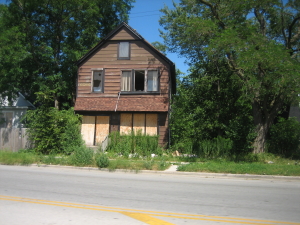One out of every 10 homes in Chicago is vacant, and with additional foreclosures expected in 2012, several non-profits in the Chicagoland area are approaching the vacancy pickle in ways that anticipate pending programs from the federal government.
Reported by Sandra Guy of the Chicago Sun-Times, the non-profits are not only renting out the properties, but also incentivizing prospective buyers.
For instance, Neighborhood Housing Services, a non-profit that has been around for 35 years, is spending $18 million on purchases and refinancings of single-family homes, along with new lending initiatives to encourage the purchasing of foreclosed vacants with the intention of renting them out at affordable rates.
Ed Jacob, the executive director of the non-profit, told Guy that he hopes his firm’s new approach will be mutual.
“This will be a new lending initiative, and we’re hoping to partner with the Community Investment Corp. and other organizations with expertise to help people do tenant screening, property management and other skills required of a landlord,” Jacob said.
Another program cited by Guy is the Neighborhood Stabilization Program, which is run by a partnership between the city of Chicago and the non-profit Mercy Portfolio Services.
Utilizing $169 million in federal Recovery Act money, the program aims to tear down vacant/distressed properties, and so far, it has conducted 51 demolitions and 161 properties that comprise 819 housing units in 22 neighborhoods scattered across the city, according to the non-profit’s Regional Vice President, William Towns.
Guy reports that ultimately, the partnership hopes to acquire and rehab 2,500 units for people at or below 120 percent of Chicagoland’s median household income.
The approaches of the non-profits, which focus on fine-tuning, rather than purging, the area’s vacant properties, has been batted around Washington for months now, as the Federal Housing Finance Agency (FHFA) has considered what to do with the millions of vacant homes on the books of Fannie Mae and Freddie Mac (and the initial idea itself – homeownership to home rentals – has literally been around for years). The FHFA, in an apparent attempt to incorporate the public, requested ideas for its vacant properties; 4,000 ideas later, no national program has been announced, though inklings have emerged.
Chicago’s vacancy rate is relatively imposing at 11.6 percent of the city’s housing stock. Representing 18,000 properties and values at $1.3 billion, the inventory is a 60 percent increase from 2000, with foreclosures being the prime culprit for the dramatic uptick.
“City officials told us they spent $875,000 to board up 627 properties in 2010 alone,” said Matthew Scire, director of financial markets and community investment for the Government Accountability Office, in Guy’s piece.
